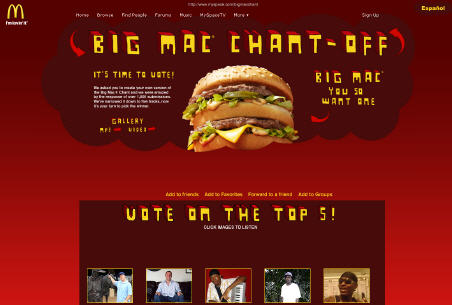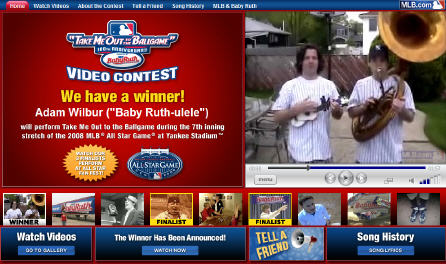-
thePlatform's New Cable Deals: Finally, an Industry Push into Broadband Video Delivery?
thePlatform, the video management/publishing company that's been a part of Comcast since early '06, had a very good day yesterday. First it jointly announced with Time Warner Cable a deal to power the #2 cable operator's Road Runner portal. And the Wall Street Journal ran a story stating that it has also signed deals with the cable industry's #3 player Cox Communications and #5 player, Cablevision Systems, which thePlatform corroborates.
Netting all this out, thePlatform will now power 4 of the top 5 cable industry's broadband portals (all except
 Charter Communications), with a total reach exceeding 28 million broadband homes, according to data collected by Leichtman Research Group. That also equals approximately 44% of all broadband homes in the U.S. And it's a fair bet that thePlatform's industry penetration will further grow.
Charter Communications), with a total reach exceeding 28 million broadband homes, according to data collected by Leichtman Research Group. That also equals approximately 44% of all broadband homes in the U.S. And it's a fair bet that thePlatform's industry penetration will further grow.I caught up with Ian Blaine, thePlatform's CEO yesterday to learn a little more about the deals and whether the industry's semi-standardization around one broadband video management platform harkens a serious, and I'd argue overdue, industry push into broadband video delivery.
Ian noted that of its various customer deals, the ones with distributors like these are particularly valuable because of their potential for "network effects." This concept means that content and application providers are more likely to also adopt thePlatform if their key distributors are already using it themselves. Ian's point is very valid, as I constantly hear from content providers about the costs of complexity in dealing with multiple distributors and their varying management platforms. Yet the potential is only realized if the distributors actually build out and promote their services, offering sizable audiences to would-be content partners.
This of course has been the aching issue in the cable industry. While they've had their portal plays for years, they've been eclipsed in the hearts and minds of users by upstarts ranging from YouTube to Hulu to Metacafe to countless others, each now drawing millions of visitors each month. While solidly utilitarian, cable's portals (with the possible exception of Comcast's Fancast) are not generally regarded as go-to places for high-quality, or even UGC video. That's been a real missed opportunity.
Ian thinks the industry is experiencing an awakening of sorts, now recognizing the massive potential it's sitting on. This includes its content relationships, network ownership and huge customer reach. Of course, all of this was plainly visible in 1998 as broadband was first taking off, yet here we are 10 years later, and it somehow seems discordant to think the industry is only now grasping its strategic strengths.
Some would explain this as the cable industry being more of a "fast follower" than a true pioneer, a posture that has helped the industry avoid hyped-up and costly opportunities others have chased to their early graves. Others would offer a less charitable explanation: the industry's executives have either been asleep at the switch, overly focused on defending traditional closed video models against open broadband's incursion, or both.
In truth, and as I've mentioned repeatedly, the broadband video industry is still very early in its development, making a "fast follower" strategy still quite viable. Semi-standardization on thePlatform gives the industry a huge potential advantage in attracting content providers. It also gives the industry a more streamlined mechanism for bridging broadband video over to the TV, an area of intense interest now being pursued by juggernauts including Microsoft, Apple, Sony, Panasonic and others.
Still, cable operators' broadband video delivery potential (and the true upside of thePlatform's omnipresence) rests more on whether cable operators are finally going to embrace broadband as an eventual complement, and possibly even successor to their traditional video business model. That would be a major leap for an industry better known for cautious, incremental steps. Time will tell how this plays out.
What do you think? Post a comment!
Categories: Cable TV Operators, Devices, Technology
Topics: Apple, Cablevision, Comcast, Cox, Microsoft, Panasonic, Sony, thePlatform, Time Warner
-
Save the Date: Sept. 9th Video Networking Event in Boston
A quick heads-up that on September 9th, VideoNuze will be hosting its first evening networking event for key players in the broadband video industry. It will be held in Boston and is geared for executives, entrepreneurs, technologists, press/bloggers and everyone else helping build out the industry. Great schmoozing, food and drink are guaranteed. Many more details coming shortly!
key players in the broadband video industry. It will be held in Boston and is geared for executives, entrepreneurs, technologists, press/bloggers and everyone else helping build out the industry. Great schmoozing, food and drink are guaranteed. Many more details coming shortly!Categories: Events
Topics: VideoNuze
-
WebTrends Beefs Up its Focus on Video Measurement
Late last week, WebTrends, the long-time player in web analytics, announced an important improvement in its video measurement capabilities. The company introduced a rich media plug-in that is compatible with most video formats (Flash, Silverlight, WMP, Real, etc.) providing customers with deeper understanding of users' behavior with video. I had a quick chat with Roger Corvill and Sean Browning at WebTrends to learn more.
Most everyone who has ever worked in any online business has likely had contact with WebTrends and other analytics packages like Omniture and Google Analytics. All of these provide valuable insight about site traffic, page usage, clickstream data, referring links and the like.
 But the massive explosion of video has introduced new complexity in the analytics world because video is a new media type requiring unique measurement capabilities. Relevant video metrics include things like abandonment rates, rewind/resume behavior, and conversion rates on offers. As user engagement shifts to video, publishers require the same degree of insight as they've come to expect in the HTML world.
But the massive explosion of video has introduced new complexity in the analytics world because video is a new media type requiring unique measurement capabilities. Relevant video metrics include things like abandonment rates, rewind/resume behavior, and conversion rates on offers. As user engagement shifts to video, publishers require the same degree of insight as they've come to expect in the HTML world.Roger and Sean said customers have been expressing these kinds of needs to them as they are urgently focused on how best to monetize their video efforts. This synchs with what I hear often from content executives; they're excited about the opportunity to be more data-driven in both their programming decisions and monetization strategies.
In ad-supported video alone, there are a bewildering array of ad formats and implementation models, with varying impacts on the user's experience. This is the crux of today's experimentation: which ad model results in optimal consumption and monetization. I think of these attributes mapped on an XY chart, with the goal to operate as far out to the right corner as possible (i.e. high consumption AND high monetization). But this can only happen with solid underlying measurement.
Until now, WebTrends customers had to customize in order to get deep video-related stats; now they will be available out of the box. One limitation, at least for now, is that WebTrends only measures video consumption on-site. That means that as video is virally spread though embedding, emailing and syndication WebTrends doesn't yet keep track. That's an important limitation given how viral video consumption is. This is a key feature that Visible Measures, a video analytics startup which I've written about previously, has focused on.
Still, just gaining greater insight about how visitors engage with on-site video is a great leap forward, and one which WebTrends customers will no doubt welcome.
Categories: Analytics
Topics: Visible Measures, WebTrends
-
YuMe Ad Network Breaks Into comScore's Ad Focus Top 10
Another sign of video advertising's continued growth is that video ad network YuMe has broken into
 comScore Media Metrix's Ad Focus top 10, reaching almost 135 million unique visitors in June. The full stats are in this comScore release. While obviously a big win for YuMe (which I've previously written about here), a larger point that I think is worth noting is that this demonstrates how pervasive broadband video is becoming for all publishers. Going forward I expect YuMe's reach to continue to rise, and also for other video ad networks to keep moving up comScore's list.
comScore Media Metrix's Ad Focus top 10, reaching almost 135 million unique visitors in June. The full stats are in this comScore release. While obviously a big win for YuMe (which I've previously written about here), a larger point that I think is worth noting is that this demonstrates how pervasive broadband video is becoming for all publishers. Going forward I expect YuMe's reach to continue to rise, and also for other video ad networks to keep moving up comScore's list. Categories: Advertising
-
VMIX: Another Entrant in Video Platform Space
Competition continues to intensify in the already-crowded video content management/platform space, with additional players continuing to hit my radar. The latest is VMIX, which contacted me after I posted my recent summary of all the companies operating in this space. I got a briefing from CEO Mike Glickenhaus, CTO/founder Greg Kostello and VP Marketing Jennifer Juckett.
VMIX has actually been around since 2005, and has built a healthy roster of customers, mainly, but not
 exclusively in the local media space. Operating purely as a white-label SaaS provider, its CORE media management platform now powers over 200 sites' video and multimedia offerings, reaching 60 million+ unique visitors/mo. Examples are regional sites such as McClatchy's KansasCity.com, Lee Enterprises' StlToday.com and Landmark's HamptonRoads.com along with others such as American Cancer Society's SharingHope.tv.
exclusively in the local media space. Operating purely as a white-label SaaS provider, its CORE media management platform now powers over 200 sites' video and multimedia offerings, reaching 60 million+ unique visitors/mo. Examples are regional sites such as McClatchy's KansasCity.com, Lee Enterprises' StlToday.com and Landmark's HamptonRoads.com along with others such as American Cancer Society's SharingHope.tv.Given how crowded the space is, I'm always interested in how video platform companies articulate their points of differentiation. In this case Mike outlined several ways starting with the idea that VMIX's sale focuses on revenue generation for local media companies, rather than technology adoption. Mike has a long executive career in local media, and explained that traditionally revenue generation has been the prism through which technology decisions are made; this is no doubt truer than ever in a difficult economy.
VMIX backs up this positioning with a professional services team that helps structure sponsorship programs for its customers, also helping train them in how to sell video. Note this is a tactic that WorldNow, the leading video platform company in local media space uses as well. This angle makes sense to me - as an industry executive recently said to me, "Revenue generation never gets commoditized."
Beyond revenue, VMIX also emphasizes its UGC capabilities. UGC is scary, unmanaged terrain for most media companies and so VMIX has staffed up a human reviewing process to filter each piece of user-generated content uploaded to its customers' sites. That may seem a bit daunting, but the payoff is that these local media companies are able to broaden their news-gathering nets, at a time when newsroom headcount is shrinking (for one example of UGC is being mixed with professional video, see what CNN is doing with its iReport series). One last differentiator is VMIX's "Marketplace" where it offers third party video to its customers on an ad inventory sharing basis.
Looking beyond VMIX for a moment, there is a lot of excitement yet to come in the overall video management/platform space. In the last 2 weeks I've had briefings with other players in this space who are preparing major new initiatives and customer announcements that will up the ante for everyone.
What do you think? Post a comment now!
Categories: Technology
Topics: VMIX
-
Friday Fun from Bio-Rad and Eppendorf
Ending the week on a lighter note, I want to point out two videos sure to make you chuckle. If you're thinking they're from late-night comedians or new online comedy networks or even YouTube's user-generated video trove, think again. They're from about the most unlikely place you can imagine: the life sciences industry.
That's right, two life sciences companies, Bio-Rad Laboratories and Eppendorf AG are demonstrating that the so-called "democratization of video" has truly reached into some unexpected places.
The funnier of the two is Bio-Rad's "Scientists for Better PCR," a hilarious and campy imitation of "We Are the World" featuring a collection of singer lookalikes (I spotted Bob Dylan, Bette Midler, Stevie Wonder, Joe Cocker, Quincy Jones and others...see who you can identify). Also, it's worth clicking on the "Download the Lyrics" link to see the actual words they're singing - it makes the experience even more amusing.
In case you were interested, which I'm guessing most of you are not, PCR stands for "polymerase chain reaction" which is a method to find the genes/DNA of a living organism. The song brings the product to life in a way that no other marketing collateral ever could have done. The PCR song has been out for a while, but hadn't hit my radar. Hat tip to Anystream's Geoff Allen for bringing it to my attention.
Meanwhile, also check out Eppendorf's hilarious boy band sendup to promote its epMotion Automated pipetting system (don't ask me what this product does). Again take a look at the lyrics to add to the humor.
This week I've spent a fair amount of time highlighting how brands and others are using broadband video in creative and clever ways to bring their messages to life. When I see all of these examples, I continue to be impressed with just how versatile the broadband medium is.
Categories: Brand Marketing
-
McDonald's is Next with Big Mac UGV Contest
Yesterday I wrote about Baby Ruth's MLB All-Star Game UGV contest, and outlined the reasons why we should expect to see a lot more of these brand-sponsored UGV contests.
Sure enough, like clockwork, yesterday's NYTimes carried a long article about McDonald's new "Big Mac Chant-Off" UGV contest. This one, run in conjunction with MySpace, solicits video and audio submissions of users re-creating the fast food chain's famous 1974 "2 All Beef Patties" jingle. Though not tied to a marquee event like the All-Star Game, the Academy Awards of the political conventions as are the other UGV contest I mentioned yesterday, the McDonald's contest's tie in with MySpace gives it extra buzz.
The NYTimes article also notes another UGV contest from Klondike ("What Would You Do for a Klondike Bar?" This contest sports a $100,000 prize, and judging by the number of entries, plenty of people are gunning for it.
As I said yesterday, I expect no end to the number of brands that are going to pursue these kinds of UGV contests. -
Baby Ruth Hits a Home Run with UGV All-Star Game Contest
Baby Ruth hit a home run at Tuesday night's All-Star Game with its "Take Me Out to the Ballgame" user generated video contest. The contest was heavily promoted during the All-Star Game and ran in association with Major League Baseball.
In case you missed it, the challenge was to creatively sing the classic ballpark tune in 2 minutes or less. The contest received dozens of submissions, which were then narrowed to a list of finalists, judged by a committee of three. The judging criteria was weighted heavily toward originality, but also included creative use and/or incorporation of the Baby Ruth brand, ensuring that the candy maker got strong visibility in the videos. The winner got to perform during the 7th inning of the game. (I didn't see this part of the game, so I don't know if it happened. Note a peeve is that MLB/Baby Ruth should be offering video of the winner singing at Yankee Stadium, which would be an instant classic, but doesn't seem to be.)
Still, I'm a big fan of UGV contests like this especially when the brand, contest and tie-in event all harmonize, as was the case with this Baby Ruth contest. Though these contests require significant upfront coordination, the payoff is that they are a unique branding opportunity that can inexpensively break through today's ad clutter. Not to mention these contests are a real crowd-pleaser, playing on the same voyeuristic viewer impulses that programs like American Idol have tapped into brilliantly.
I've said repeatedly that the abundant volume of UGV available at YouTube and elsewhere provides evidence that there's a ton of amateur talent out there. Brands and others that figure out how to leverage it can generate excitement and deepen customer engagement. In addition - and with a little luck - these videos can also turn into viral sensations, driving a near infinite ROI for the underlying brand.
Other recent examples that combine UGV with high profile events include Dove's "Supreme Cream Oil Body Wash Ad Contest" (in conjunction with the Academy Awards) and MySpace/NBC's "Decision '08 Convention Contest" (in conjunction with this summer's political conventions). I expect more to come. If you see examples, please let me know!
What do you think? Post a comment now!
Categories: Brand Marketing, Sports, UGC
Topics: Baby Ruth, Dove, MLB, MySpace, NBC





